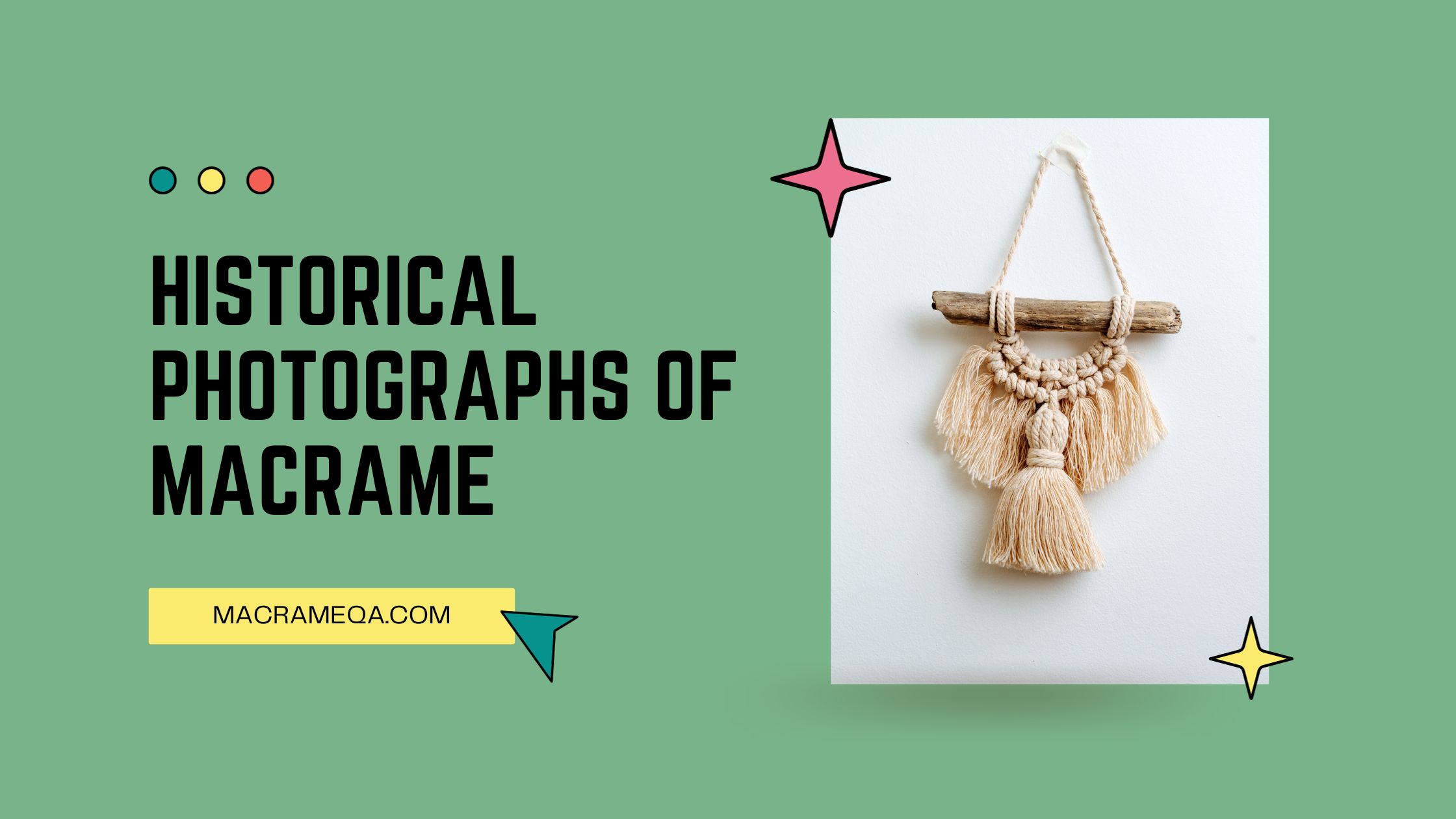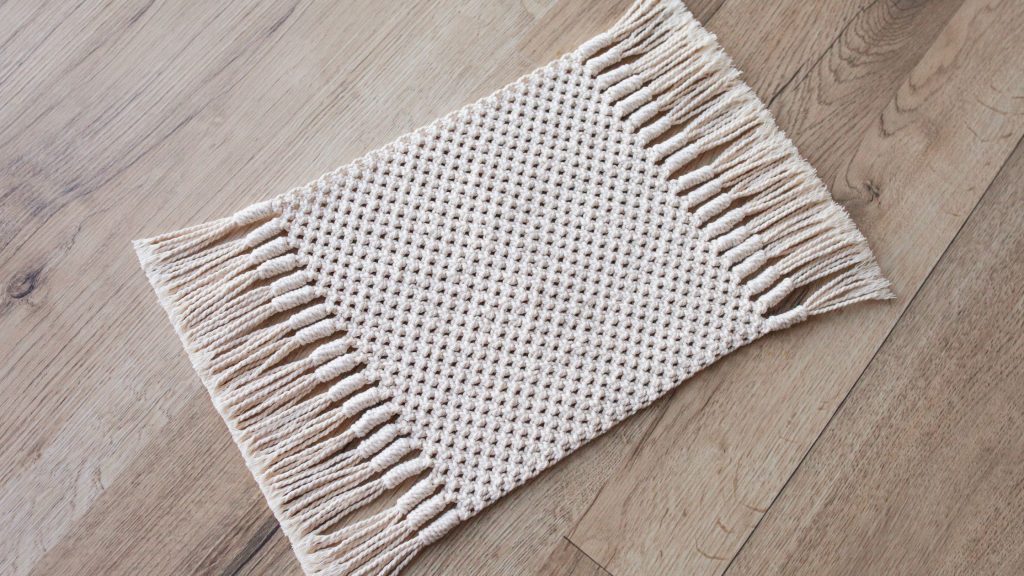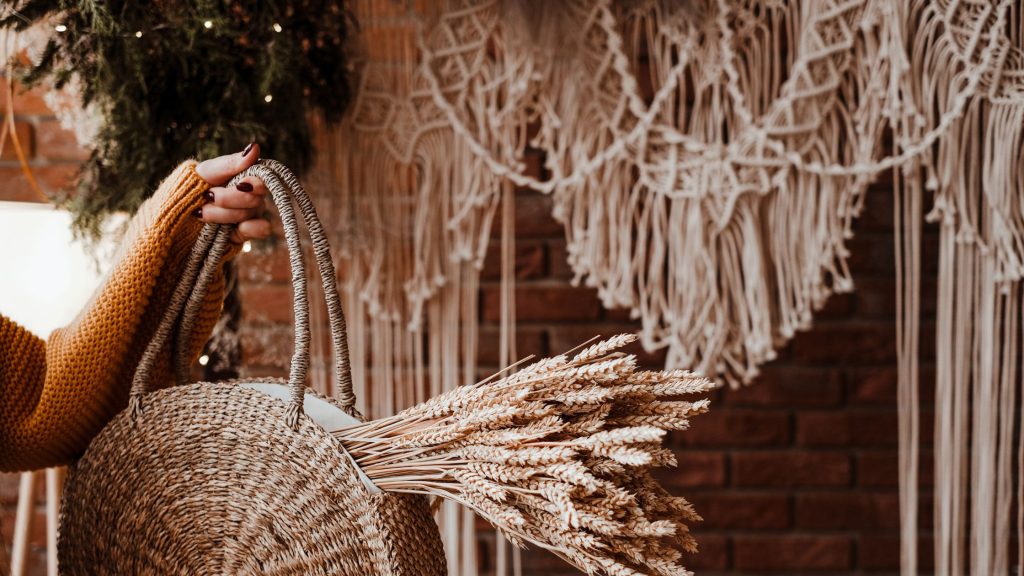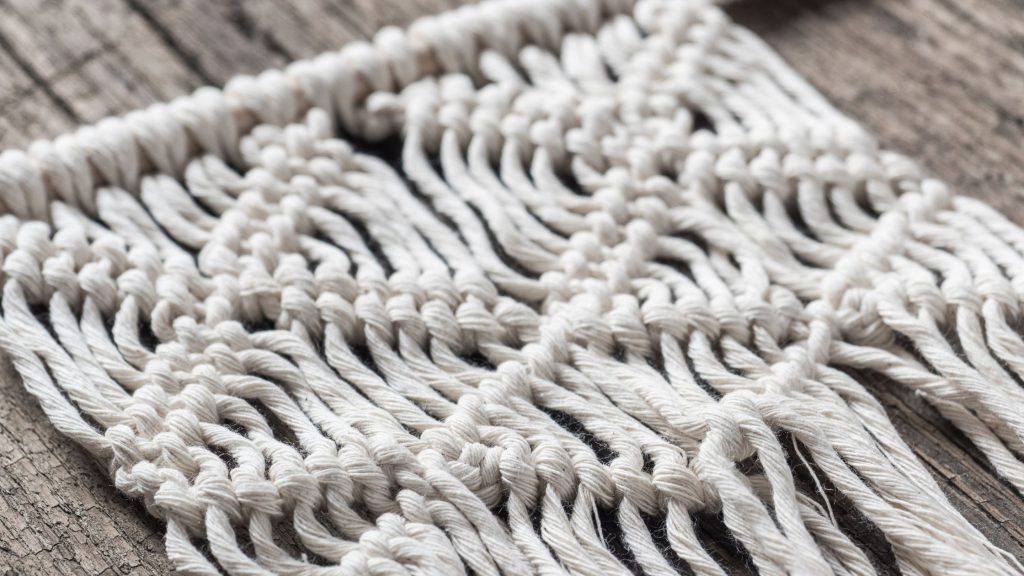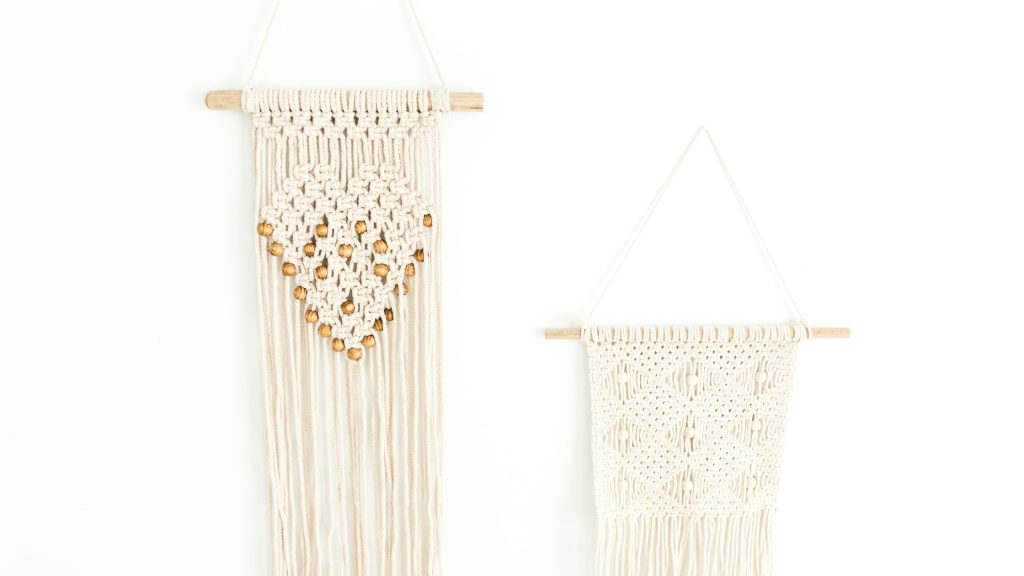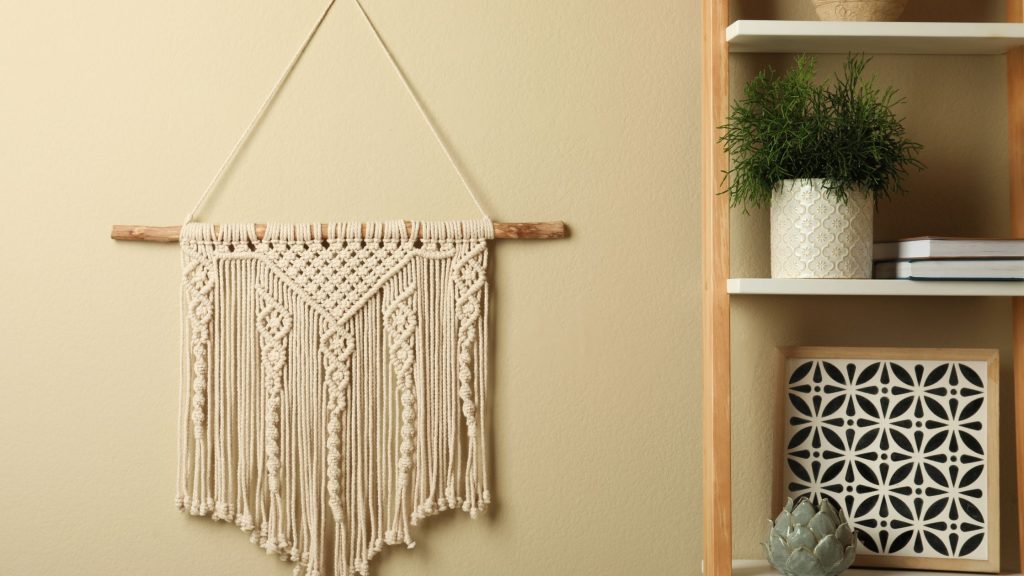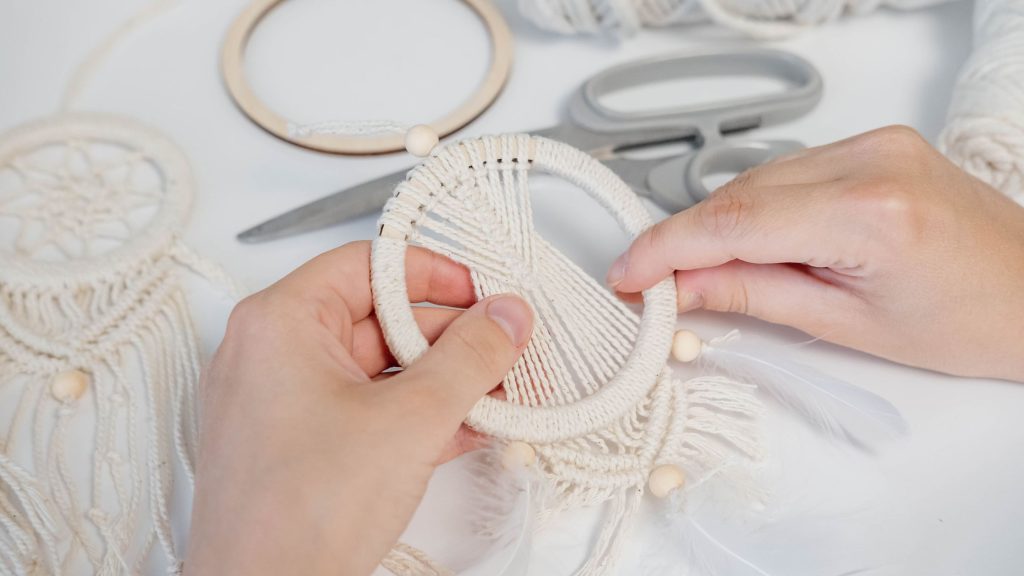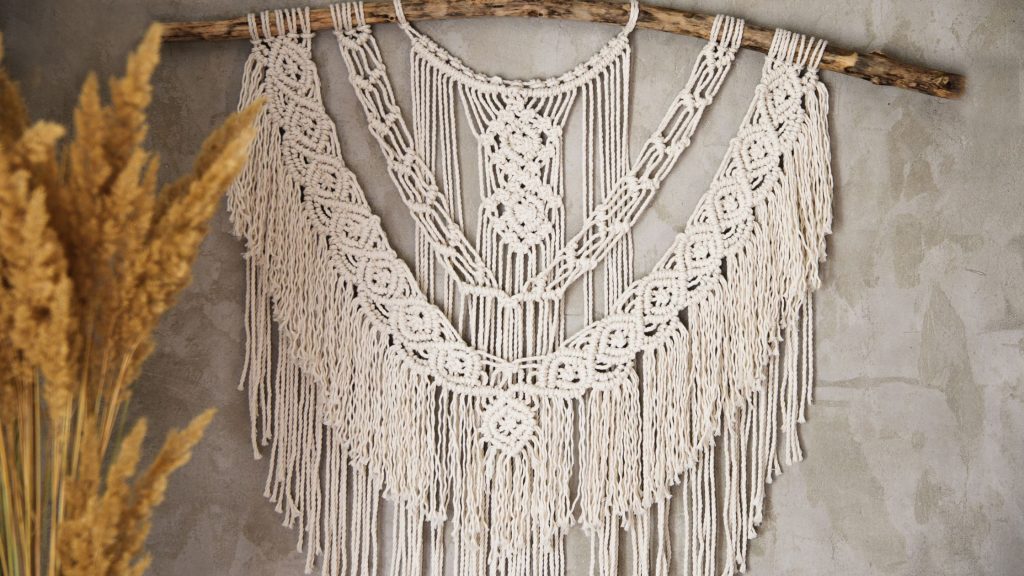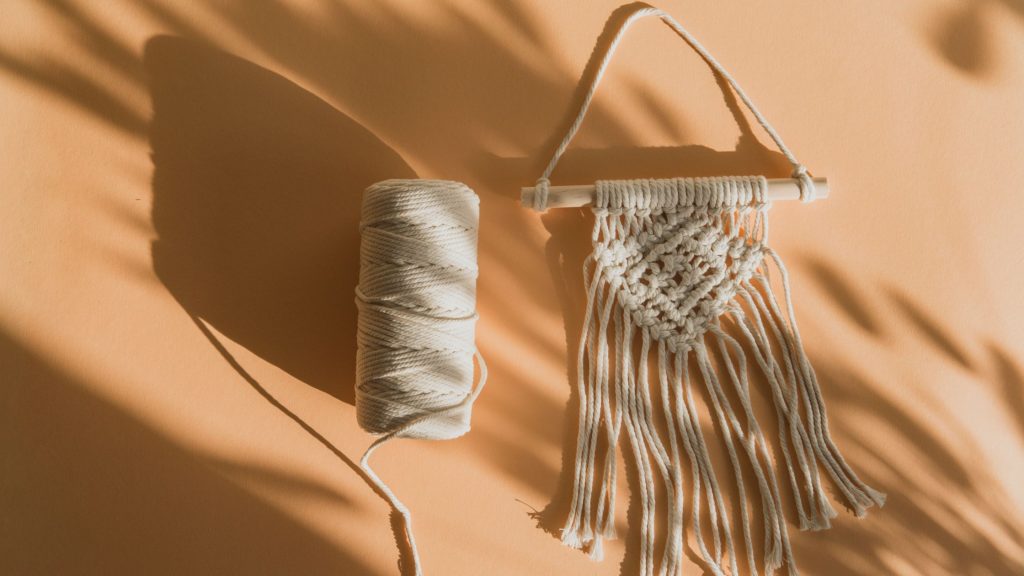Have you ever wondered about the fascinating history of macrame and how it has been used throughout the years? If so, you’re in luck! In this article, we’ll explore the captivating world of historical macrame and invite you to share any photographs you may have showcasing this ancient art form in use. From intricate wall hangings to beautifully crafted plant holders, these historical photographs of macrame will transport us back in time, offering a glimpse into the rich tapestry of macrame’s past. So dust off your family albums and prepare to embark on a journey of nostalgia and creativity as we unravel the stories behind these remarkable visual treasures.
History of Macrame
Origins of Macrame
Macrame, the art of knotting cords to create intricate patterns, has a rich and fascinating history that dates back centuries. Although its exact origins remain a topic of debate among historians, macrame is believed to have originated in ancient Arabia or China. The word “macrame” is derived from the Arabic word “migramah,” which means fringe, referring to the decorative fringe created through the knotting technique. Over time, macrame spread across various cultures and evolved into different forms as people discovered new techniques and purposes for this versatile craft.
Developments in Macrame Techniques
As macrame traveled across continents and cultures, diverse techniques and styles were developed, each with its unique characteristics. One such technique is the square knot, also known as the reef knot, which forms the foundation of many macrame designs. The square knot involves interlocking two cords by crossing them and pulling them tight, creating a sturdy and symmetrical knot.
Another significant development in macrame techniques is the use of different knots to create various patterns and textures. For instance, the half hitch knot, also known as the lark’s head knot, is commonly used to attach cords to a mounting point. The double half hitch knot, on the other hand, is frequently utilized to create diagonal or chevron patterns in macrame designs. These advancements in knotting techniques allowed macrame artists to experiment and unleash their creativity in crafting intricate and beautiful pieces.
Uses of Macrame in History
Macrame in Ancient Civilizations
Macrame has a long history of being used in various ancient civilizations around the world. One of the earliest known examples of macrame can be traced back to ancient Egypt. The Egyptians used macrame to create decorative fringes on textiles, such as clothing and burial shrouds. Additionally, macrame techniques were employed in creating nets for fishing and hunting, showcasing the practicality and versatility of this craft.
Macrame in Medieval Times
During medieval times, macrame continued to flourish and was utilized in different contexts. In Europe, macrame was commonly seen in the ornate decorations of churches and cathedrals. Intricate macrame lace, known as “passementerie,” adorned altars, screens, and vestments, adding a touch of elegance to religious spaces. Macrame also found its way into fashion during this period, with nobles and royalty often wearing macrame accents on their garments as a symbol of wealth and status.
Macrame in the Victorian Era
The Victorian era witnessed a resurgence in macrame’s popularity, particularly within the realm of home decor. Intricate and elaborate macrame curtains, known as “portieres,” were used to partition rooms, adding privacy and a touch of opulence. Macrame was also incorporated into accessories such as lampshades, tablecloths, and cushion covers, further enhancing the aesthetic appeal of Victorian interiors. The intricate and delicate nature of macrame perfectly complemented the ornate designs and lavishness of the Victorian era.
Macrame in the Arts and Crafts Movement
The late 19th and early 20th centuries saw the rise of the Arts and Crafts Movement, which emphasized the value of handmade craftsmanship and celebrated traditional techniques. Macrame became an integral part of this movement, as artisans and designers sought to revive and promote the beauty of this ancient craft. Leading figures such as William Morris and Charles Rennie Mackintosh incorporated macrame into their designs, showcasing the intricate patterns and natural materials that defined the Arts and Crafts aesthetic.
Macrame in the 1960s and 1970s
The 1960s and 1970s witnessed a macrame resurgence, fueled by the counterculture movements and the desire for bohemian-style home decor. Macrame wall hangings, plant hangers, and curtains became popular, adorning the homes of those seeking a connection to nature and a more laid-back lifestyle. Macrame workshops and instructional books on macrame techniques became widely available, allowing individuals to create their unique macrame pieces and immerse themselves in this expressive art form.
Photographs of Macrame in Ancient Civilizations
Macrame in Ancient Egypt
Photographs capturing the use of macrame in ancient Egypt provide a glimpse into the rich history and cultural significance of this craft. These images showcase the intricate knotting techniques employed to create decorative fringes on textiles, highlighting the Egyptians’ mastery of macrame. From clothing embellishments to burial shrouds, these photographs allow us to appreciate the artistry and craftsmanship that distinguished macrame in ancient Egyptian society.
Macrame in Ancient China
Historical photographs of macrame in ancient China reveal the profound influence this craft had on the country’s culture and traditions. Chinese macrame, known as “Jie dai,” featured intricate knotting patterns used in various applications, such as clothing accessories, jewelry, and home decor. The photographs capture the beauty and precision of Chinese macrame, showcasing its seamless integration into the fabric of everyday life in ancient China.
Macrame in Pre-Columbian America
Pre-Columbian America offers another captivating chapter in the history of macrame. Photographs of ancient indigenous cultures, such as the Incas and Mayans, depict macrame’s role in their textiles and ceremonial objects. Macrame was used to create intricate patterns and motifs on garments, tapestries, and even hammocks. These photographs serve as a testament to the rich cultural heritage of macrame in pre-Columbian America and provide valuable insights into the artistic expressions of these ancient civilizations.
Photographs of Macrame in Medieval Times
Macrame Decorations in Churches and Cathedrals
Photographs showcasing macrame decorations in churches and cathedrals during the medieval period allow us to appreciate the grandeur and intricate details of this art form. Elaborate macrame lace-adorned altars, screens, and vestments, add a touch of ethereal beauty to sacred spaces. These photographs capture the interplay of light and shadow on the delicate macrame patterns, illustrating the profound impact macrame had on religious aesthetics during this era.
Macrame in Medieval Fashion
Medieval fashion photographs provide a glimpse into the use of macrame in clothing and accessories during this time. From delicate macrame trims on robes and dresses to intricately knotted belts and headpieces, macrame added a touch of elegance and sophistication to medieval attire. These photographs serve as a visual testimony to the creative ways in which macrame was incorporated into fashion during the medieval period.
Photographs of Macrame in the Victorian Era
Macrame as Home Decor
Photographs of macrame as home decor in the Victorian era offer a glimpse into the opulent and lavish interiors of this period. Elaborate macrame curtains, portieres, and room dividers created a sense of grandeur and privacy within Victorian homes. These photographs showcase the intricate knotting techniques and the use of natural fibers, such as cotton and linen, to create stunning macrame pieces that adorned windows, doorways, and various corners of Victorian interiors.
Macrame Fashion and Accessories
The Victorian era also witnessed the integration of macrame into fashion and accessories. Historical photographs showcase the use of macrame on evening gowns, parasols, and handbags, highlighting its versatility as an embellishment. Macrame collars, cuffs, and even jewelry became fashionable accessories, reflecting the prevailing aesthetic sensibilities of the Victorian period. These photographs allow us to appreciate the beauty and craftsmanship of macrame in the realm of fashion during this time.
Photographs of Macrame in the Arts and Crafts Movement
Macrame in William Morris Designs
Photographs documenting macrame in William Morris’s designs bring to life the essence of the Arts and Crafts Movement. Morris, a prominent figure of this movement, incorporated macrame into his textile designs, adding a sense of intricacy and delicate beauty. These photographs highlight the integration of natural motifs, such as flowers and vines, into macrame patterns, showcasing Morris’s commitment to creating functional yet aesthetically pleasing pieces.
Macrame in the Works of Charles Rennie Mackintosh
Another key figure in the Arts and Crafts Movement, Charles Rennie Mackintosh, also embraced macrame as a medium for his artistic expression. Photographs capturing the works of Mackintosh reveal the distinctive style and geometric patterns that defined his macrame designs. From room dividers to hanging planters, Mackintosh’s macrame pieces embodied the simplicity and elegance that characterized his broader architectural and artistic concepts.
Photographs of Macrame in the 1960s and 1970s
Macrame in Hippie Culture
Photographs reflecting macrame’s presence in hippie culture during the 1960s and 1970s capture the free-spirited and bohemian aesthetic that defined this era. Macrame became a popular craft in the counterculture movement, with individuals channeling their creativity into creating unique macrame pieces. From macrame clothing and accessories to free-flowing macrame art installations, these photographs serve as a window into the vibrant and unconventional expressions of the time.
Macrame as Wall Hangings and Plant Hangers
The 1960s and 1970s saw the emergence of macrame as a popular choice for wall hangings and plant hangers. Photographs of macrame wall hangings showcase the intricate knotting patterns, unique designs, and the natural fibers utilized to create these decorative pieces. Macrame plant hangers, suspended from the ceilings and windowsills, not only added a touch of greenery to urban spaces but also created a sense of harmony and balance within the home. These photographs allow us to appreciate the fusion of art and nature that characterized macrame during this period.
Preserving Historical Photographs of Macrame
Challenges in Preserving Macrame Photographs
Preserving historical photographs of macrame poses several unique challenges, primarily due to the delicate nature of the craft. Macrame fibers are susceptible to damage from light, humidity, and physical handling, making it crucial to handle and store these photographs with care. Additionally, the intricate patterns and details of macrame may not always translate well in photographs, requiring careful preservation techniques to capture the essence and beauty of this art form accurately.
Digitizing and Sharing Macrame Photographs
Digitizing macrame photographs offers a solution for preserving and sharing these valuable historical resources. By creating high-resolution digital scans or photographs of the originals, we can ensure their longevity and accessibility for future generations. Online platforms and digital archives provide an avenue for sharing these digitized macrame photographs with a broader audience, allowing individuals to explore and appreciate the history of macrame from the comfort of their homes.
Where to Find Historical Photographs of Macrame
Museums and Art Institutions
Museums and art institutions often house collections that include historical photographs of macrame. These institutions curate and preserve these photographs, enabling visitors to immerse themselves in the rich history and cultural significance of macrame. Exhibitions and curated displays provide a unique opportunity to see these photographs up close and appreciate the intricate details and craftsmanship of macrame throughout the ages.
Archives and Special Collections
Archives and special collections, such as those found in libraries or universities, are valuable resources for accessing historical photographs of macrame. These collections often include rare or unique images that shed light on the development and evolution of macrame as a craft. Researching and exploring these archives can uncover hidden gems and deepen our understanding of the historical context and significance of macrame.
Online Platforms and Digital Archives
The advent of online platforms and digital archives has made it easier than ever to access historical photographs of macrame. Websites and databases dedicated to preserving visual arts and crafts often feature digitized collections of macrame photographs, allowing users to explore and appreciate these images with just a few clicks. These platforms provide a global reach and ensure that these photographs are accessible to enthusiasts, researchers, and anyone interested in the history of macrame.
Conclusion
Historical photographs offer a unique and captivating window into the history of macrame, allowing us to appreciate the intricate craftsmanship and cultural significance of this ancient craft. From ancient civilizations to the Victorian era, the Arts and Crafts Movement, and the counterculture of the 1960s and 1970s, macrame has left an indelible mark on various periods and cultures. Preserving and sharing these photographs is essential in ensuring that the beauty and legacy of macrame continue to inspire and fascinate future generations. So, whether you explore museum exhibitions, delve into archives, or immerse yourself in online platforms, take the time to appreciate and learn from the historical photographs that capture the rich history of macrame.

